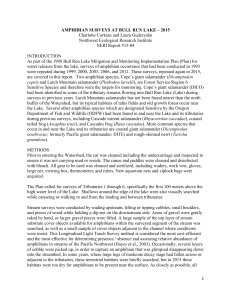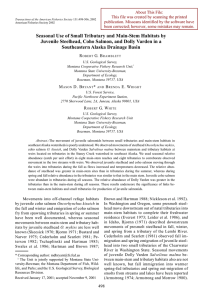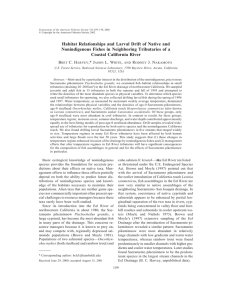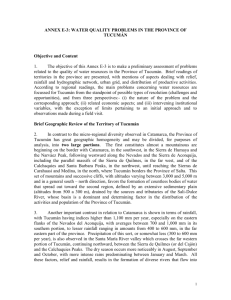Abstract
advertisement
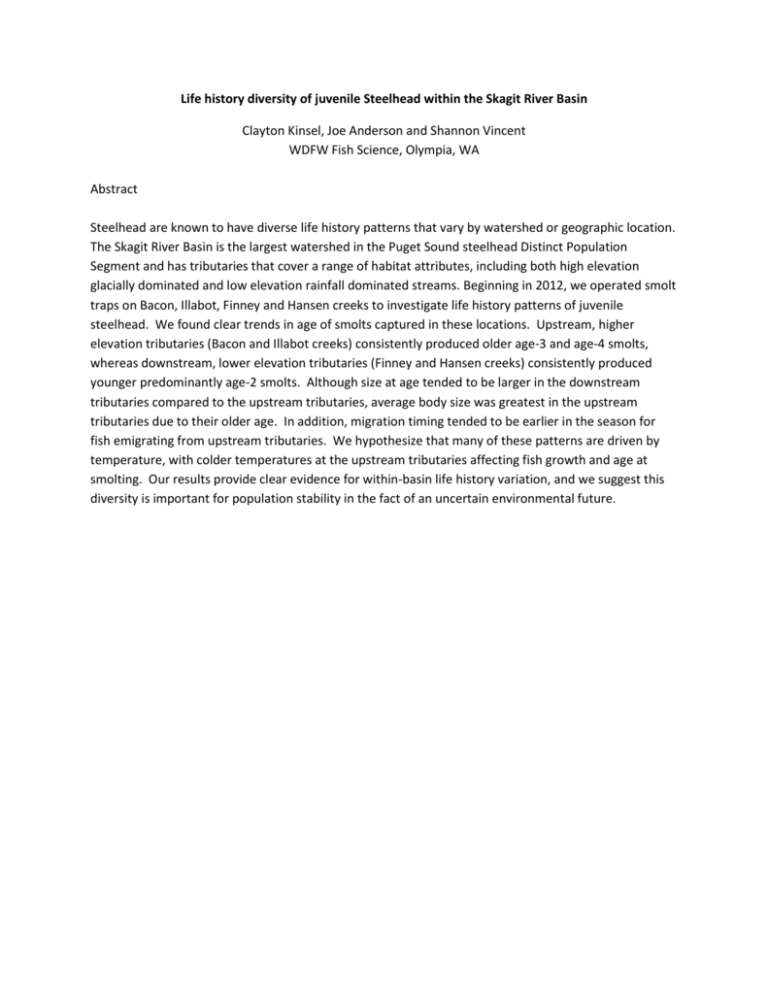
Life history diversity of juvenile Steelhead within the Skagit River Basin Clayton Kinsel, Joe Anderson and Shannon Vincent WDFW Fish Science, Olympia, WA Abstract Steelhead are known to have diverse life history patterns that vary by watershed or geographic location. The Skagit River Basin is the largest watershed in the Puget Sound steelhead Distinct Population Segment and has tributaries that cover a range of habitat attributes, including both high elevation glacially dominated and low elevation rainfall dominated streams. Beginning in 2012, we operated smolt traps on Bacon, Illabot, Finney and Hansen creeks to investigate life history patterns of juvenile steelhead. We found clear trends in age of smolts captured in these locations. Upstream, higher elevation tributaries (Bacon and Illabot creeks) consistently produced older age-3 and age-4 smolts, whereas downstream, lower elevation tributaries (Finney and Hansen creeks) consistently produced younger predominantly age-2 smolts. Although size at age tended to be larger in the downstream tributaries compared to the upstream tributaries, average body size was greatest in the upstream tributaries due to their older age. In addition, migration timing tended to be earlier in the season for fish emigrating from upstream tributaries. We hypothesize that many of these patterns are driven by temperature, with colder temperatures at the upstream tributaries affecting fish growth and age at smolting. Our results provide clear evidence for within-basin life history variation, and we suggest this diversity is important for population stability in the fact of an uncertain environmental future.

















